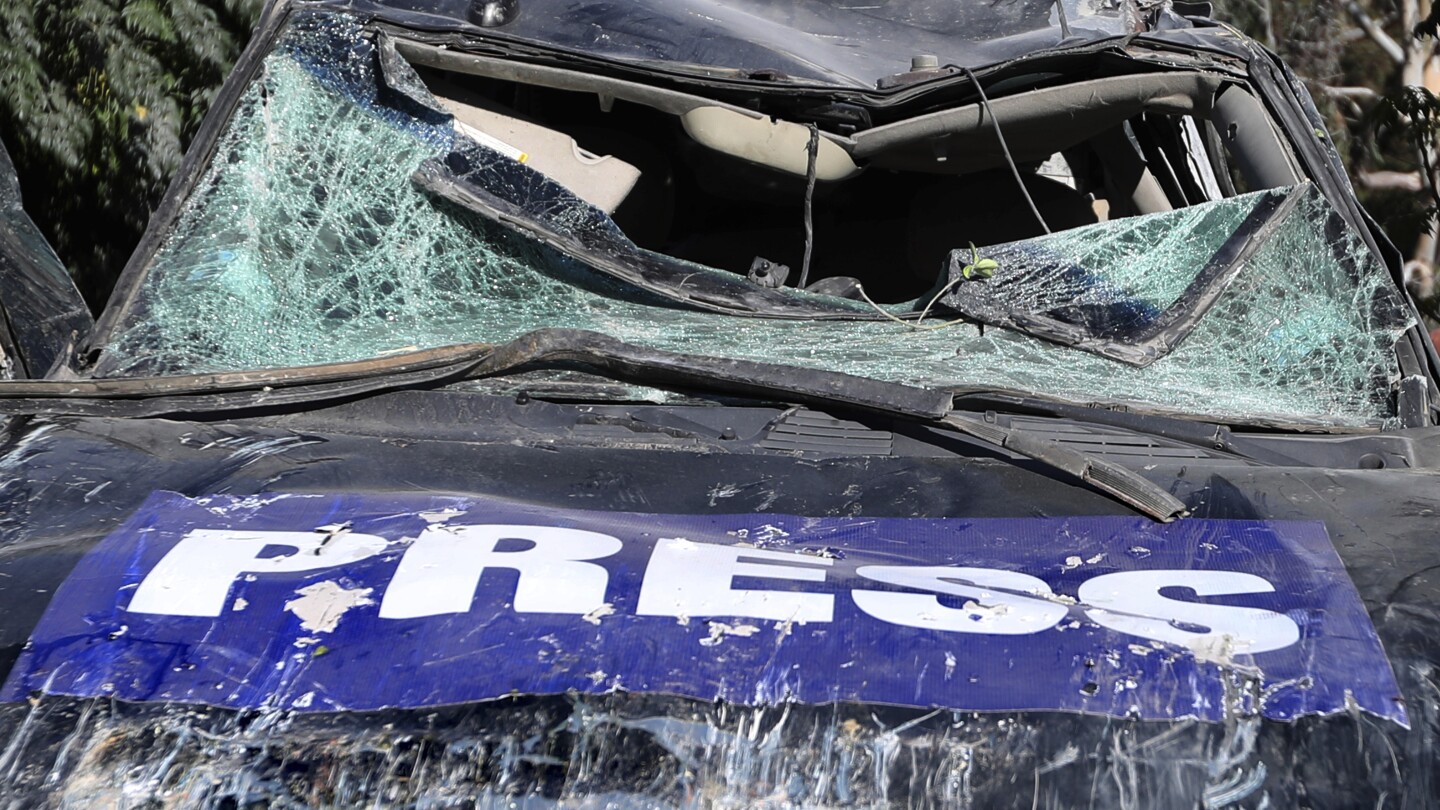BEIRUT (AP) — Israeli strikes killed 38 people in Gaza and three journalists in Lebanon on Friday as growing worries about supply shortages in Gaza and international pressure for a cease-fire mounted.
The deaths reported by Gaza health officials were the latest in the southern Gaza city of Khan Younis, where people have in recent days lined up for bread outside the city’s only bakery in operation. They come a day after United States Secretary of State Antony Blinken said that Israel had accomplished its objective of “effectively dismantling” Hamas and implored both sides to revive negotiations.
Also on Friday, an Israeli airstrike on guesthouses where journalists were staying in southeast Lebanon killed three media staffers working for news outlets that are seen as aligned with Lebanon’s Hezbollah group and its patron, Iran.
Outside of now-collapsed buildings rented by various media outlets, cars marked “PRESS” lay covered in dust and rubble after the strike, Associated Press photos showed.
The Israeli army did not issue a warning prior to the strike.
Representatives of the news networks and Lebanese politicians accused Israel of war crimes and intentionally targeting journalists.
“These were just journalists that were sleeping in bed after long days of covering the conflict,” said Imran Khan, a senior correspondent for Al Jazeera English who was among the journalists in the compound.
In a social media post, he said he and his team were unhurt.
The Beirut-based Al-Mayadeen TV said two of its staffers — camera operator Ghassan Najar and broadcast technician Mohammed Rida — were among the journalists killed early Friday. Hezbollah’s Al-Manar TV said its camera operator Wissam Qassim was also killed in the airstrike on the Hasbaya region.
Al-Mayadeen’s director Ghassan bin Jiddo alleged that the Israeli strike on a compound housing journalists was intentional and directed at those covering elements of its military offensive. He vowed that the Beirut-based station, a pan-Arab broadcaster seen as aligned with Hezbollah, would continue its work.
The strike occurred hours after the Israeli military’s Arabic language spokesman, Avichay Adraee, directly challenged Al-Mayadeen war correspondent Ali Mortada in online posts and referred to him as “my enemy” in English. The X post ended with the English phrase “Take care.” Mortada was not involved in the strike.
Lebanon’s Information Minister Ziad Makary said the journalists were killed while broadcasting what he called Israel’s crimes, and noted they were among a large group of members of the media.
“This is an assassination, after monitoring and tracking, with premeditation and planning, as there were 18 journalists present at the location representing seven media institutions,” he wrote in a post on X.
The Israeli military did not immediately comment on the strike.
Ali Shoeib, Al-Manar’s well-known correspondent in south Lebanon, was seen in a video filming himself with a cellphone saying that the camera operator who had been working with him for months was killed. Shoeib said the Israeli military knew that the area that was struck housed journalists of different media organizations.
“We were reporting the news and showing the suffering of the victims and now we are the news and the victims of Israel’s crimes,” Shoeib added in the video aired on Al-Manar TV.
The Hasbaya region has been spared much of the violence along the border and many of the journalists now staying there have moved from the nearby town of Marjayoun that has been subjected to sporadic strikes in recent weeks. Earlier in the week, a strike hit an office belonging to Al-Mayadeen on the outskirts of Beirut’s southern suburbs, according to Lebanon’s Health Ministry.
Lebanon’s Health Minister said Friday that 11 journalists have been killed and eight wounded since exchange of fire began along the Lebanon-Israel border in early October 2023.
In November 2023, two journalists for Al-Mayadeen TV were killed in a drone strike. A month earlier, Israeli shelling in southern Lebanon killed Reuters videographer Issam Abdallah and wounded other journalists from France’s international news agency, Agence France-Presse, and Qatar’s Al-Jazeera TV.
The killing of journalists has prompted international outcry from press advocacy groups and United Nations experts, although Israel has said it does not deliberately target them.
On Thursday, the Committee to Protect Journalists said it had preliminarily counted 128 journalists killed in Gaza since the war began.
Israel has accused journalists working for Al Jazeera of being members of militant groups, citing documents it purportedly found in Gaza. The network has denied the claims as “a blatant attempt to silence the few remaining journalists in the region.”
The Committee to Protect Journalists has dismissed them as well, and said that “Israel has repeatedly made similar unproven claims without producing credible evidence.”
Hamas-led militants stormed into southern Israel on Oct. 7, 2023, killing some 1,200 people, mostly civilians, and abducting another 250. Around 100 hostages are still inside Gaza, a third of whom are believed to be dead.
Israel’s retaliatory offensive has killed over 42,000 Palestinians, according to Gaza’s Health Ministry, which does not say how many were combatants but says women and children make up more than half the fatalities. The Israeli military says it has killed over 17,000 fighters, without providing evidence.
The Israeli campaign has since expanded to Lebanon, where Israel launched a ground invasion Oct. 1, after trading fire with the Hezbollah militant group for much of the past year.
Lebanese health officials reported another day of intense airstrikes and shelling Thursday, which they said killed 19 people over 24 hours and raised the overall Lebanese death toll to 2,593 since October 2023.
___
Shurafa reported from Deir Al-Balah, Gaza Strip. Associated Press journalists Mohammed Zaatari in Hasbaya, Lebanon and Adam Schreck in Jerusalem contributed reporting.
